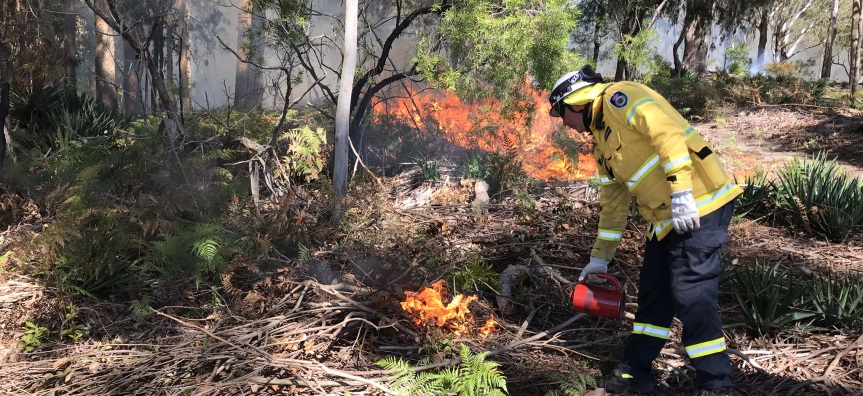
The lead agency for response to bush fire is NSW Rural Fire Service (RFS) and Fire & Rescue NSW (in urban areas).
Fire is a natural part of the Australian environment. With lightning and Indigenous burning methods having shaped natural environment ecosystems over thousands of years, many of our plants are reliant on bush fire to regenerate and stay healthy.
The direction that a landscape faces can affect how a fire moves. On the Northern Beaches, west-facing slopes are the hottest and driest. The vegetation is more flammable, but these plants are more fire tolerant. South-facing slopes are usually cooler, wetter and have less flammable vegetation.
The RFS can help with advice and information on hazard reduction burning, current bush fire alerts and planning.
Know your risk
Check if your property is in bush fire prone area on the hazards map
Specific bush fire risk information is available within the Warringah Pittwater and Manly Bush Fire Risk Management Plans.
Bush fire inspections
If you worry that vegetation on nearby land may be a bush fire risk, you can request an RFS inspection by calling 9450 3000, emailing or by filling out a bush fire hazard report online form.
Have a plan
Prepare your Bush Fire Survival Plan. It will help you plan what to do including whether to leave early and prepare your home.
Prepare your home and property
A well prepared home is more likely to survive a bush fire.
- Prepare your home and tick off the checklist to be sure you’re ready.
- Check if the 10/50 Vegetation Scheme applies to your property
- If your property is required to have an Asset Protection Zone, ensure these are maintained at all times.
- Prepare yourself and family
- Prepare for your pets and large animals
- Make sure all your important documents are in a safe, easy to access location.
- Check your insurance. Do you have adequate cover for home and contents?
If you are concerned about a bush fire hazard on private or public property, contact the NSW RFS Northern Beaches District office on 9450 3000 or log online on the RFS website. Once you raise a request, the RFS Community Safety Officer will complete a site visit and advise the resident and Council if remedial works are required.
If you are planning on spending leisure time within bushland areas on the Northern Beaches, please be safe and check the following conditions:
Get bush fire ready - 5 steps video
During a bush fire or when a fire weather warning is issued
- Activate your Bush Fire Survival Plan.
- Always inform family and friends of your movements.
- Check the RFS alert level of threat from fire.
- Monitor the location and status of Fires Near Me.
- Tune into ABC Radio 702AM to listen to warnings and advice.
- Follow any advice or directions given by the emergency services.
- Neighbourhood Safer Places are a place of last resort during a bush fire emergency. They are to be used when all other options in your bush fire survival plan can't be put into action safely.
- Also, and only if it is safe to do so, contact your ABC Radio 702AM via phone or social media to tell others what you can see. This will help the community with first-hand and reliable knowledge about what's going on.
After a bush fire
- There are many issues to consider after a bush fire, including contacting fire emergency services, getting information and updates about your property, assessing property damage and insurance, understanding the status of your local utilities including electricity, water etc.
- There are a number of assistance schemes available to those in areas declared natural disasters, including personal hardship, assistance for small business and assistance for local councils. Resilience NSW has further information about disaster assistance programs.
